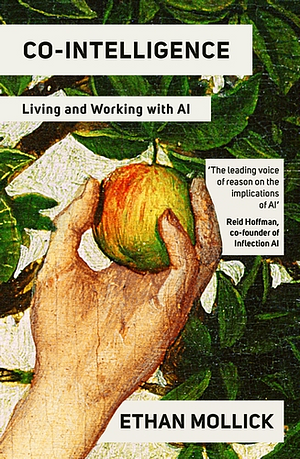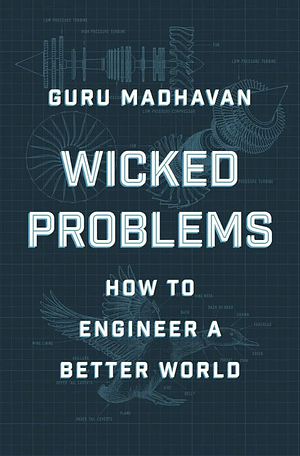Both/And Thinking - Paradox System (Chapter 7)
I’ve started reading Both/And Thinking and am capturing my thoughts here as I go. Right now these are mostly the raw notes as synthesis comes later. You may find it interesting to start with the first post in this series or to read them all.
Finishing up with the toolbox building, today’s reading, added the enabling dynamism. “Dynamism involves actions that spur learning, enable adaptation, and encourage ongoing shifts between competing demands.”
The Narrative that underpinned much of the chapter was about the 4th CEO and only second non-family member CEO of W. L. Gore. The company was facing the challenge of having a very, deliberately, small-team, employee driven and personal network oriented organization into a multi-billion dollar enterprise that had some need for elimination of redundancy and for the ability to do the same work the same way every time. This is a type of paradox called an organizing paradox, which “reveal[s] conflicts in how we structure our lives and organizations.” This was illustrated by a quote from Terri Kelley, the CEO in question:
As Kelly told us, “It used to just happen organically as groups would just gather and something innovative would come out, and they would take it and drive it through, and voilà … But when you try to manage multibillion-dollar businesses, there is a lot more discipline and decision-making around investment and global coordination.”
The opening quote really hit the concept of being dynamic:
Today’s successful business leaders will be those who are most flexible of mind. An ability to embrace new ideas, routinely challenge old ones, and live with paradox will be the effective leader’s premier trait. Further, the challenge is for a lifetime. New truths will not emerge easily. Leaders have to guide the ship while simultaneously putting everything up for grabs, which is itself a fundamental paradox. —Tom Peters
Experimenting Using Measured Steps
This is mostly focused on the idea of making plans that are scoped to avoid over investment and force re-evaluations. What I have always thought of sunk-cost fallacy is described by the authors here as escalating commitment. “Even when a behavior, habit, or culture no longer serves our purposes, and even if we know we need to change, we still hold on, afraid to let go of the known and to move into new and uncertain possibilities.”
There is a great illustration of this at IDEA discussing rapid prototyping. The company introduced this concept after discovering that, “Most designers would spend lots of time analyzing the problem and thinking through a solution up front. By the time they created the prototype, they invested so much effort in the process that they would be hesitant to change the design. The prototype no longer served as a tool for dynamic learning and change.”
This is critical because, “[e]xperimentation helps us navigate paradoxes, in part, by exposing hidden synergies.”
A way to to give yourself freedom here may be to think of things not as decisions but as experiments with a fixed time period before re-evaluation. The freedom to both re-evaluate and cancel can overcome escalating commitment and falling into ruts.
Preparing for Serendipity
“As individuals and as leaders, we can create the conditions for serendipity; this approach allows us to engage in novelty and will prevent us from getting stuck in a rut.” The authors define “serendipity as planned luck—finding something valuable when we are not looking for it.” This is critical because people rarely take luck into account, instead believing that preparation and foresight rule all. This is heavily done in retrospective examination of success.
Richard “Pascale has gone on to elaborate on some of the tools that allow for sustained serendipity. These tools include valuing different options, honoring and creating opportunity for debate, and diminishing the power dynamics in a company to allow for input from across the ranks. Pascale and his colleagues describe these practices as cultivating agility. We agree that this dynamism is necessary for long-term success—the planning that allows for luck.”
Learning to Unlearn
To learn to unlearn we need to move to a process of double-loop learning.
Harvard professor Chris Argyris, considered one of the founding thinkers of organizational development, describes the challenge that Boyle faced as one of double-loop learning. We practice single-loop learning regularly and nearly automatically. We make a decision, try it out, get feedback, and use the new knowledge to improve our future decisions. Double-loop learning challenges our embedded assumptions, mental models, and decision rules that led us to our decision in the first place. Argyris uses a thermostat as a metaphor. Imagine that a thermostat is set to sixty-seven degrees Fahrenheit. The thermostat monitors the temperature in the room, collects data, and then responds accordingly, adding colder air (or reducing heat) when the temperature is too high and adding warmer air (or reducing cold) when the temperature is too low. That process reflects single-loop learning. Double-loop learning involves questioning the assumption about why the thermostat is set to sixty-seven degrees.
Chapter Takeaways
For completeness and my future reference, the authors suggest these takeaways
- Either/or thinking can lead us to get stuck in ruts. In response, we need both/and thinking that enables us to learn, develop and change. This set of tools seeks to help us enable vital and ongoing dynamics:
- Experimenting with measured steps: Taking small, frequent, and low-cost steps to test new ideas, learn from feedback, and move forward allows us to push ahead even while still experiencing uncertainty.
- Enabling serendipity: Through planned luck, we can better open possibilities for innovation and change. Through purposeful exploration, we can put ourselves in positions to experience or create opportunities, and in the mindset to engage them.
- Learning to unlearn: Paradoxes are dynamic, asking us to constantly rethink and change what we know. To do so, we must be prepared to let go of our existing certainties.
Note: I read this on Friday but due to a crazy busy day and weekend, it didn’t get posted until today. I deferred reading today in lieu of this post. Conveniently, tomorrow’s reading starts a whole new section of the book.



